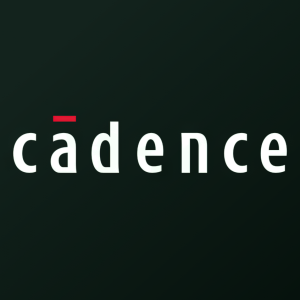Cadence Unveils Millennium Platform—Industry’s First Accelerated Digital Twin Delivering Unprecedented Performance and Energy Efficiency
Highlights:
- Revolutionary dedicated HW/SW acceleration platform leverages GPU and CPU computing and proprietary software algorithms to deliver up to 100X design impact through accuracy, speed and scale
- GPU-resident solvers dramatically improve the energy efficiency of simulation by 20X over traditional HPC
- Digital twin, AI and HPC technology combine to provide the best multiphysics simulation solution for automotive, A&D, energy, turbomachinery and data center markets
- Innovative generative AI technology further accelerates design and analysis exploration, enabling optimal system solutions through superior design insight
- Available for CFD multiphysics analysis today in the cloud or as an on-premises appliance to accommodate customers’ business requirements

The Cadence® Millennium™ Enterprise Multiphysics Platform is the industry’s first hardware/software accelerated digital twin solution for multiphysics system design and analysis. The Millennium platform leverages GPU and CPU computing and proprietary software algorithms to deliver up to 100X design impact through accuracy, speed and scale. (Graphic: Business Wire)
Designing mechanical systems for new levels of performance and efficiency has become a key priority in the automotive, aerospace and defense (A&D), energy and turbomachinery industries. To optimize performance and reduce greenhouse gases, automotive designers are focused on improving fuel efficiency, reducing drag and noise, and extending electric vehicle range. Increasing efficiency, reducing carbon emissions and reducing maintenance frequency are top of mind for A&D and turbomachinery design engineers. Advances in multiphysics simulation technology are critical to achieving these goals. Performance, accuracy, capacity and accelerated computing are all essential to enabling digital twin simulations that explore more design innovations, providing confidence that they will function as intended before undertaking prototype development and testing.
The Millennium Platform addresses these needs. Highlights and benefits include:
- Performance: Combines best-in-class GPU-resident CFD solvers with dedicated GPU hardware to provide supercomputer-equivalent throughput per GPU of up to 1000 CPU cores
- Efficiency: Reduces turnaround time from weeks to hours with 20X better energy efficiency compared to its CPU equivalent
- Accuracy: Leverages Cadence Fidelity™ CFD solvers to provide unmatched accuracy to address complex simulation challenges
- High-Performance Computing: Built with an extensible architecture and massively scalable Fidelity solvers to provide near-linear scalability on multiple GPU nodes
- AI Digital Twin: Rapid generation of high-quality multiphysics data enables generative AI to create fast and reliable digital twin visualizations of the optimal system design solution
- Turnkey Solution: The industry’s first solution that couples GPU compute with modern and scalable CFD solvers, providing an optimized environment for accelerated CFD and multidisciplinary design and optimization
- Flexibility: Available with GPUs from leading vendors, in the cloud with minimum 8 GPU configurations, or on premises with a minimum 32 GPU configuration—providing a flexible and scalable solution to fit each customer’s deployment needs
“Throughout our 35-year history, Cadence has been focused on increasing performance with no loss of accuracy for the most challenging computational applications. Algorithmic throughput remains a key priority, and we’re now leveraging generative AI to harvest knowledge gained from massive quantities of design and simulation data,” said Ben Gu, corporate vice president of R&D for multiphysics systems analysis at Cadence. “Our revolutionary Millennium platform is a giant leap forward, delivering unprecedented acceleration and scalability of digital twin and AI applications. CFD is poised to benefit greatly from performance and efficiency gains, and the tremendous power of the Millennium M1 is disrupting industries that must explore more design innovations and bring them to market faster.”
The Millennium M1 is available today for early adopters. For more information, please visit www.cadence.com/go/millenniumpr.
Customer Endorsements
“Honda and Cadence have worked together for more than 10 years to accelerate CFD design processes. Our deployment of Cadence’s Millennium M1 multiphysics supercomputing platform, with its LES solver, has demonstrated significantly faster turnaround time and the scalability to simulate much larger systems for aerodynamics, combustion and aeroacoustics applications for our automotive, aeropropulsion and eVTOL projects. With the potential for significant acceleration of high-fidelity CFD simulations, we look forward to continuing our collaboration to develop next-generation CFD solutions.”
Atsushi Ogawa, Chief Operating Officer, Honda R&D Co., Ltd.
“At Corvid, we routinely leverage high-fidelity CFD for aerodynamics and thermal simulations. The combination of Cadence Fidelity CFD software and GPU computing has increased our high-fidelity simulation throughput by up to 8X for our subsonic applications. Given the large volume of simulations we run for each program, we expect the Millennium M1 to have a significant positive impact on our workflow in terms of speedup and accuracy.”
Mathieu Amiraux, Senior Aerodynamicist, Corvid Technologies
“Our collaboration with Cadence has been exceptional. ASUS is excited to work with Cadence on their new Millennium platform, which delivers exceptional performance and energy efficiency through Cadence’s revolutionary combination of hardware and software. We look forward to our continued partnership to address AI-enabled digital twin designs and multiphysics simulation challenges today and in the future.”
Paul Ju, Corporate Vice President and CTO of Data Center, ASUS
“Cadence’s Millennium M1 with its CharLES solver’s high-fidelity flow simulation technology represents the state-of-the-art in computational fluid dynamics, leveraging recent innovations in numerical methods, physical modeling, and GPU computing. This mixture of accuracy, speed and scale is already impacting the design of aerospace, automotive, and energy systems where turbulence plays a critical role and will usher in a new generation of predictive simulations. In addition, the significantly increased rate of production of high-quality simulation data will greatly enhance our ability to develop control and modeling concepts including AI-based models and the realization of digital twins.”
Professor Parviz Moin, Stanford University and Founding Director of the Center for Turbulence Research (CTR)
About Cadence
Cadence is a pivotal leader in electronic systems design, building upon more than 30 years of computational software expertise. The company applies its underlying Intelligent System Design strategy to deliver software, hardware, and IP that turn design concepts into reality. Cadence customers are the world’s most innovative companies, delivering extraordinary electronic products from chips to boards to complete systems for the most dynamic market applications, including hyperscale computing, 5G communications, automotive, mobile, aerospace, consumer, industrial and healthcare. For nine years in a row, Fortune magazine has named Cadence one of the 100 Best Companies to Work For. Learn more at cadence.com.
© 2024 Cadence Design Systems, Inc. All rights reserved worldwide. Cadence, the Cadence logo and the other Cadence marks found at www.cadence.com/go/trademarks are trademarks or registered trademarks of Cadence Design Systems, Inc. All other trademarks are the property of their respective owners.
Category: Featured
View source version on businesswire.com: https://www.businesswire.com/news/home/20240201928464/en/
Cadence Newsroom
408-944-7039
newsroom@cadence.com
Source: Cadence Design Systems, Inc.







